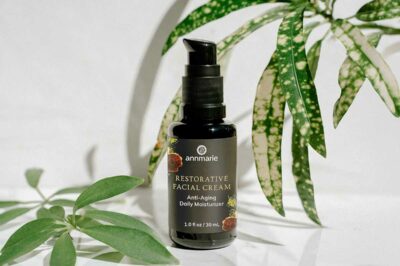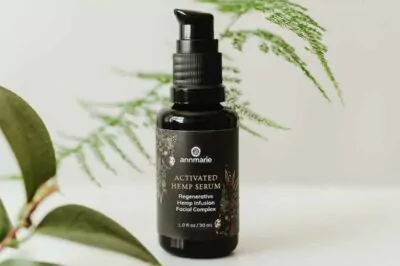Table of Contents[Hide][Show]
Combination skin is exactly what it sounds like – a mix of skin types on your face. If you’ve noticed an oily T-zone but dry cheeks, you’re not alone. This common skin type can be tricky, but understanding it is the first step to great skin. In this guide, we’ll explain what combination skin is, how to spot it, why it happens, and how to care for it. We’ll cover everything from telltale signs to tailored skin care routines. Whether you’re just discovering your skin type or looking to improve your regimen, you’ll find practical advice here.
What is Combination Skin?
Combination skin is a common skin type characterized by having two or more different skin types occur on your face at the same time. As Dr. Ugonabo, a dermatologist, explains: “Combination skin means that there are some areas of your face that are dry and other areas of your face that are more oily. For those with combo skin, the T-zone (forehead, nose, and chin) is commonly oily, and the cheeks are often drier.”
Key characteristics of combination skin:
- Oily T-zone: The forehead, nose, and chin tend to be oilier due to a higher concentration of sebaceous glands in these areas.
- Drier cheeks: The cheek and neck areas are typically less oily or sometimes dry.
- Uneven complexion: This difference in oil production can lead to a visibly uneven complexion and texture.
- Mixed skin concerns: People with combination skin may experience fine lines, wrinkles, shininess, and clogged pores at the same time.
- Enlarged pores: Often more visible in the oily areas, particularly on the nose.
- Variable skin texture: Some areas may be smooth while others are rough or flaky.
The dual nature of combination skin can lead to unique challenges. In oily areas, excess sebum can disrupt the skin’s natural shedding process, potentially leading to clogged pores. Conversely, dry areas may experience flakiness or tightness.
Combination skin is not static; it can change with seasons, hormonal fluctuations, and age. This dynamic nature often requires a balanced and adaptable skin care approach to care for your skin with natural defenses and promote a healthy-looking complexion.
What Causes Combination Skin?
Combination skin is primarily influenced by genetics, but several factors contribute to its development and exacerbation. Dr. Joshua Zeichner, Director of Cosmetic and Clinical Research in Dermatology at Mount Sinai Hospital, explains, “Some people are genetically predisposed to having overactive oil glands in certain areas of the face, particularly the T-zone, while other areas remain normal or dry.”
Hormonal fluctuations are another major cause of combination skin. Changes during puberty, menstruation, pregnancy, and menopause can affect sebum production, often intensifying combination skin characteristics. These hormonal shifts can lead to increased oiliness in some areas while leaving others dry.
Environmental factors, especially changes in weather and climate, can significantly impact combination skin. A study in the Journal of the Mechanical Behavior of Biomedical Materials found that from winter to summer, trans-epidermal water loss decreased by 22% while skin hydration increased by 26%, indicating improved skin barrier function and moisture retention in warmer months. Winter can dry out cheeks while the T-zone remains oily, and summer humidity can increase overall oil production.
Inappropriate skin care routines and products can also contribute to combination skin problems. Using harsh or unsuitable products can disrupt the skin’s natural balance, stripping oils from some areas while oversaturating others.
Other factors include age, diet, and stress. The American Academy of Dermatology notes that skin generally becomes drier with age, but some individuals may still experience oiliness in the T-zone. A study in the National Institutes of Health linked high-glycemic diets to increased sebum production, potentially contributing to combination skin patterns.
How To Check if You Have Combination Skin
A reliable method is the “cleansing test.” After washing your face with a gentle cleanser, let your skin dry naturally for about 30 minutes without applying any products. If you notice your cheeks feeling tight and dry while your T-zone (forehead, nose, and chin) appears shiny, you likely have combination skin.
Beyond this simple test, there are several other indicators of combination skin:
- Mixed characteristics are common, with an oily T-zone contrasting against drier cheeks. You might notice enlarged pores and shine in your T-zone, while your cheeks feel tight or rough.
- Seasonal changes often affect combination skin dramatically. In winter, you may experience increased dryness, especially on the cheeks. Summer, on the other hand, can bring more pronounced oiliness to the T-zone.
- Throughout the day, you might notice your skin changing. While it feels relatively balanced in the morning, your T-zone may become increasingly oily as the day progresses, with cheeks remaining dry.
- Product compatibility can also be a telltale sign. If you find that mattifying products make your cheeks uncomfortably dry, while moisturizing products leave your T-zone excessively oily, this suggests a combination skin type. Similarly, you might notice uneven makeup application, with cosmetics fading faster on your T-zone while lasting longer on your cheeks.
What’s the Ultimate Skin Care Routine for Combination Skin?
Combination skin demands distinct care for its oily T-zone and drier areas like the cheeks. The key is to use products that harmoniously address these contrasting needs. Below are the morning and evening routine tailored to nurture and maintain the health of combination skin
Morning Routine for Combination Skin
For your morning routine, focus on gently cleansing, balancing, hydrating, and moisturizing both the oily T-zone and the drier areas. This full 6-step routine focuses on honoring the skin and working with it, rather than against it, for a fresh, balanced-looking complexion.
- Cleanser: Start your day by gently cleansing your face to remove any excess dirt or buildup. Opt for a mild, pH-balanced produces.
- Toner: Use an alcohol-free toner. Traditionally, a toner was used to rebalance the skin’s pH (since many commercial cleansers can be too harsh). However, if using a pH-balanced cleanser, the toning mist should instead hydrate the skin and enhance absorption of products that follow in your routine.
- Serum: Apply a serum with hyaluronic acid or saccharide isomerate. These ingredients are excellent for hydrating the skin without making it greasy. Focus on applying it evenly across the face, with an emphasis on the dry areas to maintain hydration balance.
- Moisturizer: Look for a nourishing, lightweight facial oil that is biocompatible with combination skin. That way, your skin will receive proper moisturization, working with your skin’s natural oil production rather than over or underwhelming it.
- Sunscreen: Choose a natural sunscreen with broad spectrum SPF. A lightweight formula that wears sheer is ideal for combination skin.
- Makeup (Optional): If you use makeup, opt for a semi-matte mineral-based foundations and concealers. Use a powder formula to mattify to prevent excessive oiliness in the T-zone.
Evening Routine for Combination Skin
Your evening skin care routine is a crucial time to nourish and restore combination skin. You should pay attention to your skin’s drier areas and oilier zones, ensuring a balanced, rejuvenated complexion by morning.
- Makeup remover: If you wear makeup, begin your evening routine with a gentle makeup remover, like the Restorative Cleansing Oil. It harnesses antioxidant-rich manuka oil, clarifying tea tree oil, and nourishing castor oil to deeply cleanse the skin and remove makeup.
- Cleanser: Follow up with a pH-balanced cleanser to thoroughly remove any remaining makeup residue and the rest of the day’s buildup. A gentle, non-stripping cleanser is ideal for maintaining the natural balance between the oily and dry areas of the skin.
- Toner: Remember, a toner (or toning mist) is essential for product absorption. Use a hydrating and nourishing toner before applying serums and oils so that they can absorb into your skin much more effectively.
- Apply serum: Choose a serum targeting specific skin concerns like fine lines or uneven texture.
- Apply moisturizer: Use a nourishing facial oil or night cream, applying a richer formula to dry areas and a lighter one to oily zones. Find a suitable moisturizer for combination skin
Weekly Routine for Combination Skin

In addition to your daily routine, incorporate these weekly steps to balance and nourish your combination skin:
- Exfoliate (1-2 times per week): Use a gentle exfoliant to remove build up and impurities. Focus more on the T-zone and be gentler on the cheeks.
- Apply a Balancing Mask (once per week): Choose a mask that purifies oily areas without over-drying. Clay-based masks with hydrating ingredients are ideal for combination skin.
- Use Gentle Chemical Exfoliants: Incorporate alpha-hydroxy acids (AHAs) from natural sources like fruits (malic acid), milk or honey (lactic acid), or sugar cane (glycolic acid). These help with reawakening the skin without irritating dry areas.
- Targeted Treatment: Use activated anti-aging ingredients like vitamin C, collagen prepeptides or retinol alternatives to see targeted results. The Concentrated Boosting Elixirs contain clean and safe ingredients from nature that deliver scientifically proven results..
How to Care for Different Types of Combination Skin?
Combination skin varies widely among individuals, requiring personalized approaches to skin care.
Combination Skin with Blemish-Prone Areas
For those with combination skin and blemish-prone areas, the focus is on balancing natural oils while supporting clear-looking skin. Use non-comedogenic products to help maintain clear pores, especially in the oily T-zone. Consider products with salicylic acid (or its derivative, white willow bark) for areas prone to blemishes, but avoid applying them to drier parts of your face. Use products specifically targeted for oily skin to help control oil production and avoid products that say “oil-free” as they typically will contain stripping ingredients, which can cause your skin to overproduce oil and, therefore, can cause potential future breakouts.
Sensitive Combination Skin
Sensitive combination skin requires a soothing approach while still addressing combination concerns. Look for products with barrier-restoring ingredients like ceramides and niacinamide, as well as soothing components such as licochalcone A (found in licorice root). Consider using facial oils at night to protect dry areas.
Extreme Combination Skin
Extreme combination skin presents a unique challenge, with a significantly oily T-zone contrasting sharply with very dry, often flaky cheeks and outer areas. This skin type requires a carefully tailored approach to avoid exacerbating either extreme.
Key strategies for managing extreme combination skin include:
- Use a gentle, pH-balanced cleanser across the entire face to prepare the skin without stripping or irritating.
- Always use a toning mist to help product absorption.
- Never skip your hydrator -aqueous serum, typically rich in aloe and hyaluronic acid.
- Apply rich facial oils or moisturizers only to very dry areas, carefully avoiding the oily T-zone.
- Dab oil-absorbing products exclusively on oily areas to prevent over-drying already parched skin.
- Finish with a lightweight, non-comedogenic sunscreen year-round to protect all skin areas.
Seasonal Combination Skin
Many people find their combination skin changes with the seasons, requiring routine adjustments. Use richer oils and heavier moisturizers on dry areas in winter and switch to lighter formulas in summer, especially for the T-zone. Maintain consistent sun protection year-round.
How to Choose Skin Care Products for Combination Skin?
Selecting the right products for combination skin requires a strategic approach that addresses both oily and dry areas.
Tailoring Your Product Selection and Routine
To choose skin care products for combination skin, focus on addressing both oily and dry areas with targeted solutions. Use lightweight, hydrating products for the T-zone and more emollient formulas for drier areas. Look for multi-tasking products labeled “non-comedogenic” and aim for pH-balanced options (around 5.5) to maintain skin equilibrium.
Select cleansers, toners, and moisturizers specifically formulated for combination skin. Incorporate targeted treatments like clay masks for oily zones and hydrating serums for dehydrated areas. Adapt your routine seasonally, using lighter products in summer and more moisturizing ones in winter.
Ingredients to Consider
When choosing products, prioritize those with beneficial ingredients. Here are key ingredients beneficial for this skin type:
- Hyaluronic Acid: Provides hydration without clogging pores. Its light texture makes it suitable for all areas of combination skin, balancing moisture levels without causing excess oiliness.
- Niacinamide: Helps regulate oil production in the T-zone while improving overall skin barrier function.
- Salicylic Acid (white willow bark): It helps remove build-up from the surface of the skin in oily areas, helping to create a more even skin tone and minimize the appearance of dark spots.
- Glycolic Acid: Gently exfoliates dead skin cells and promotes skin regeneration. Use sparingly (1-2 times a week) to avoid over-drying.
- Vitamin C: An antioxidant that protects skin from environmental stressors and evens out the appearance of skin tone, addressing both oily and dry areas effectively.
- Lactic Acid: A gentle exfoliant that hydrates dry areas while maintaining pore health in oily zones. It’s also beneficial for aging skin. Present in our Resurfacing Facial Exfoliant.
- Ceramides: Strengthen the appearance of the skin barrier and help retain moisture, particularly useful for the drier areas of combination skin.
- Vitamin B5 (Panthenol): Offers soothing and hydrating effects, beneficial for balancing combination skin.
Ingredients to Avoid
Wrong face cream ingredients can quickly transition your face into the oily or dry skin categories. Here’s what not to use:
- Fragrances Containing Harsh Ingredients or Phthalates: they can cause irritation and allergic reactions, particularly in sensitive or dry areas of the face.
- Parabens: are preservatives used in many skin care products. They can disrupt hormone function and may cause skin irritation, especially in sensitive areas.
- Alcohols: like denatured alcohol, SD alcohol, and isopropyl alcohol can be extremely drying and irritating, especially for the drier areas of combination skin. These ingredients can strip the skin of its natural oils, leading to increased dryness and irritation.
- Sulfates: such as sodium lauryl sulfate (SLS) and sodium laureth sulfate (SLES), are harsh detergents that can strip the skin of its natural moisture, leading to increased dryness and irritation.
- Mineral Oils: Mineral oils can be too heavy for the oily areas of combination skin, leading to clogged pores. Instead, use lightweight, non-comedogenic oils like jojoba or grapeseed oil.
- Paraffin: like mineral oil, can create a barrier on the skin that traps moisture but also clogs pores, particularly in the oily T-zone.
Annmarie Gianni ’s Best Skin Care Products for Combination Skin
Now that we’ve explored how to choose the right skin care products for combination skin, let’s look at some specific recommendations from Annmarie Gianni. These products have been carefully formulated with the needs of combination skin, each designed to address both the oily and dry areas of your face:
1. Citrus Mint Cleanser
A pH-balanced gel-cleanser that has little to no foam and doesn’t strip the skin of its natural oils.
2. Aloe Herb Cleanser
A gentle, pH-balanced cream cleanser that removes impurities without drying out the skin
3. Neroli Toning Mist
An uplifting face and body mist, with aloe vera as the base, that helps balance and hydrate the skin
4. Anti-Aging Serum
A nutrient-rich serum that provides hydration and restores skin
5. Citrus Stem Cell Serum
A complexion-boosting serum featuring brightening and lightening extracts
6. Herbal Facial Oil for Normal/Combination Skin
A balancing facial moisturizer that nourishes without clogging pores
7. Anti-Aging Eye Cream
A plant cell eye complex that targets fine lines and wrinkles around the eyes
8. Kaolin Micro Exfoliant
A gentle exfoliating scrub that helps remove impurities and unclog pores
9. Charcoal Cacao Mask
A mineral-rich facial clay mask that detoxifies and revitalizes the skin
10. Resurfacing Facial Exfoliant
11. Illuminating Pearl Mask
Skin Care Tips for Combination Skin
Combination skin types can benefit from some lifestyle changes that may help balance your skin, these include:

- Moisturize from The Inside Out: For combination skin, use a lightweight, non-comedogenic facial oil or moisturizer. You can moisturize from the inside out with essential fatty acids. Use food to balance combination skin by eating more salmon, walnuts, and flaxseed, and consider taking a fish oil or flaxseed oil supplement.
- Exfoliate Regularly, But Gently: Use a gentle exfoliant once per week to help remove build-up from the surface of the skin. If your dry areas are sensitive, focus on oilier zones.
- Adapt Your Routine: As your skin changes with seasons or hormones, be ready to adjust your skin care regimen.
- Always Wear Sunscreen: UV protection is crucial. Choose a lightweight, broad-spectrum SPF that won’t clog pores in oily areas or dry out other zones.
- Balance Cleansing: Over-cleaning dry areas can exacerbate dryness and flaking, while under-cleansing oily zones can lead to clogged pores. Find the right balance with a gentle, pH-balanced cleanser.
- Use Multi-Masking: Apply different facial masks to specific areas based on their unique needs. Use a purifying mask on oily or T-zone areas to absorb oil and impurities, and a hydrating mask on dry sections to plump and brighten.
- Don’t Neglect Your Eyes: The under-eye region is delicate and often prone to dryness and early signs of aging. This area of the face requires special attention, especially for those with dry or combination skin. Incorporate an eye cream or serum into your daily routine to combat the look of fine lines, wrinkles, dark circles, and dehydration.
- Check Your Makeup Ingredients And Routine: Look for makeup with clean, gentle ingredients that don’t aggravate your skin’s natural oil production. Apply a lightweight facial oil or moisturizer formulated for combination skin types as a base, then apply a foundation to tame excess shine.
Conclusion
Managing combination skin doesn’t have to be a challenge. With the right knowledge and routine, you can keep both your oily and dry areas happy. Remember, your skin’s needs may change with seasons or stress, so stay tuned to its signals. If you’re looking to level up your skin care game, consider exploring natural solutions like carrier and essential oils tailored for combination skin. You might also be surprised how much your diet can help balance your skin from the inside out. And don’t forget, finding the right makeup, especially foundation, can make a big difference in how your combination skin looks and feels throughout the day. Keep experimenting and adjusting – your perfect balance is out there!
Frequently Asked Questions
What Is Dry Combination Skin?
Dry combination skin refers to a skin type that has both dry and oily areas, with the dryness typically around the cheeks and jawline, while the T-zone (forehead, nose, chin) is oily.
What Is Normal Combination Skin?
Normal combination skin is a skin type where some facial areas, usually the T-zone, are oily, and other parts like the cheeks and eye area remain normal or balanced in moisture.
Is Combination Skin Oily?
Combination skin can be oily, often in the T-zone which includes the forehead, nose, and chin. These areas tend to produce more sebum or oil than other parts of the face. For those with combination skin, it’s essential to use gentle and balanced formulations that won’t overstrip the skin of its natural oils.
Can I Improve Combination Skin Through Diet? If So, What Foods Might Help?
Certain foods, such as spicy and oily foods, along with chocolate, may increase sebum production.
Do you struggle with combination skin? How do you cope? Please share any tips you may have. Be sure to visit our blog for more advice about skin types and concerns. Our facial oil collection also comes with a wide variety of some of the best products for combination skin. And if you want to try many products as one, we also offer a balance travel kit for combination skin type in our travel size skin care pack which contains many options for you to try out.








If I have combination skin-oily t zone but also cheeks and sides of face are not dry and flaky but can be oily at times that may make me oily skin. So I have mature skin (60) and want the anti-aging/firming effects but still need to control the oil. So how do I get both. Can you recommend products. I use the Aloe and the citrus cleansers both. What oil-oily or anti-aging ? When I take your tests for a skin snapshot it wants to put me in one or the other category -but I have both issues. I need to know how to use the products to help both issues. Thanks so much!
In what order do i use these products?
I think I have combination skin but I’m not really sure. My t zone is obviously the oilist part of my skin but it’s also the driest at the same time. It feels very oily but the skin is also very dry and flakey and peeling. So I have no idea what I should use or do! Anyone have any suggestions?
Hi Chelsea! If you are not already exfoliating once a week, that might be a beneficial step to implement into your regimen. Using something like our Ayurvedic Facial Scrub would be gentle yet effective. You can follow up with our Herbal Facial Oil for Normal & Combination Skin to moisturize.
I don’t think the quiz is very inclusive. I don’t exfoliate my skin because I have such sensitive skin and if I do, I’ll look red all day (trust me, it’s happened). Also, there is no option for “my T-Zone is oily and I’ve large pores on my nose, but cheeks and everywhere else is soft and sensitive.”
Hi there,
It sounds like you’re having a pretty unique experience with your skin! Write into us at ask@annmariegianni.com and we’re happy to help you find a routine that will work for you.
Best,
aubrey
Thank you very much! For a perfect skin, you should take healthy diet. If you take healthy diet regularly then, it helps you to maintain your skin charming.
I’m in my mid thirties i have a combination skin and i have begun to notice some fine lines, wrinkles around my eyes. I now use ONLY the Made from Earth Vitamin Firming Serum because its both a moisturizer and serum. After using for a week, my combination skin felt hydrated, and my fine lines reduced. It goes on the skin very smooth and soak in nicely leaving no oily residue.
I am so embarrassed of my skin I can’t wear back out clothes I have no waist line my waist is so narrow and high It seem like I complain about this problem it gets worst so frustrating you have no idea the aggravating that I feel. What should I do?????????????????????????????????????????????????????????
???????????????????????????????????????????? .
Hi Lynette,
It sounds like you’re working with a few different issues. Please write into ask@annmariegianni.com with a bit more detail about what you’re experiencing and we’re happy to help you find a solution.
Hey guys, i have a combination (obivous) and i have tried some products and they don’t work well. after getting fed up by the products i thought of switching to natural plants and i use aloe vera (raw) straight from the plant it really nourishes my skin and help me fight oiliness and dryness making it healthy and soft by restoring my face’s PH balance. The use is simple
But first grow or buy a grown aloe vera plant from garden and grow it in a dry enviorment.
Step 1 – break a fresh part of aloe vera (the closer to the stem the better) and rip it’s thorns and with a knife or bare hands (thats what i use) and rip it’s one side you will se a clear coat of gel now scrub it on the face and make sure you apply till all the gel is on your face and let it be absorbed by your skin you will se imediate reduction of dryness and some oiliness on your face use it regularly. It can work like a scrub, moisturizer, clensear.
P.S. Thank for your help, it really helped me with all this detailes i was able to find this remedy.
Just want to say thank you soooo much for helping me out!! I am soo happy that I found this and I can’t wait to follow these great tips and try out my new face products. I was really lost at first , I didn’t know anything about my face since I’m a teenager. I’m glad I researched this because I really needed it. I appreciate it and thanks again!
Thank you. That was a really thorough breakdown of everything you need to know about combination skin types. Normally combination type is overlooked because its not as easy to deal with. Thank you so much.
Do you have a sample kit for combination acne prone skin type? I would love to try your product but I must also be cost conscious if this product does not work? Can you help with my delimna?